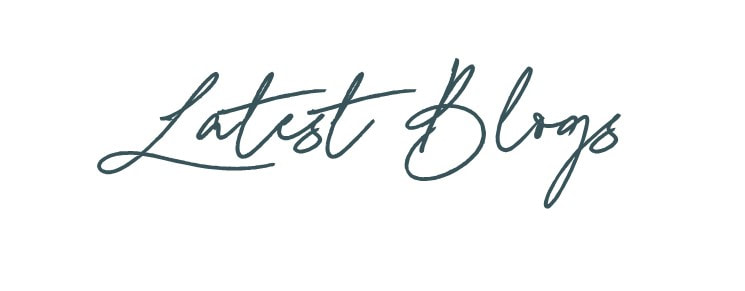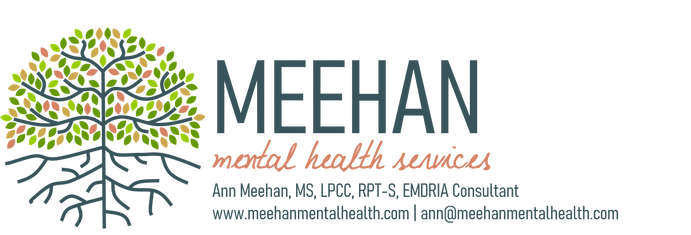|
Woo hoo! We made it – one more year down! For some 2019 held the best year ever and for others you were ready to say goodbye. Now that we’ve settled in a bit and come out of our holiday comas it’s time to get down to business and dream of what this new year holds.
For most of us new years resolutions last approximately 2.5 weeks until old habits creep in and we are back where we started. Do you want that same fate for your therapy practice? Not today! Let’s dive in to ALL the areas of a therapy practice so you can get curious of where 2020 will take you so you can develop goals that stick. There is nothing more disheartening than blowing the dust off of your resolutions and goals from last year and realizing you are one millimeter away from where you started, or worse, that you are going backwards. So as we jump into the new year it’s time to dream big! In your dream practice what will be happening in your life in the next year? What are the problems in your practice that you finally want a solution for? How will you make that happen? Some of you might think – but why set goals I am happy just as I am? To that I would quote Steve Siebold – “You’re either growing or dying. Stagnation does not exist in the universe”. Now, I’m not saying that you shouldn’t have gratefulness, gratitude, and contentment for where you are now, however it doesn’t mean that you can’t continue to grow. AND the well-seasoned and wise therapists I know are always striving to learn something new and reach for something more. If they won’t stop growing – neither should you! Now I know some of you are saying – but I’m so overwhelmed! I can’t possibly take on one more thing! Well…that might be a goal in itself. Goals give you clarity and a benchmark for what you want to have happen. I mean we do this with our client’s multiple times a week in adherence with insurance standards! Maybe insurance companies are on to something more than just busy work? You will never achieve your goal unless you call your shot – a specific, measurable, and achievable shot. So now that I (hopefully) have convinced you that goal setting is something you need in your life, practice goals can be broken down into the following categories. For some you may dive deep and target just 2-3 areas for your yearly goals. Others may want at least one goal from each area. The great news is because they are your goals you get to make them what you want! Consider your strengths and weaknesses in each of the categories below. Client Care This is really the heart and soul of a therapy practice. This is the time you spend face to face with a client in the therapy space and during this time how you show up and serve your clients. Taking a good look at your strengths and areas that you would like to continue to grow is an absolute necessity and can help you avoid burnout. Areas for growth may include increasing your ability to be present with clients. It may have to do with getting the balance right between meeting clients where they are at and encouraging growth. Maybe you want to be more structured with the beginning of your sessions or work towards ending sessions on time. This area could hold one of a million things AND just because you have areas where you want to grow, doesn’t mean in any way you are not already providing great quality care for your clients. Self Care Self care goes beyond getting a massage one time or getting regular doctor’s check ups. You should really do those things AND self care is so much more than that. Self care is the holy grail of work life balance and the intentional practice of taking care of our emotional, mental, and physical health. This area of evaluation of your practice could include hobbies you have, practices that you incorporate into your daily practice to relieve stress like taking a couple laps around your office or a mantra between sessions. Training and Education This area of your practice has to do with how you are going to improve your knowledge and skills over the next year. If you are licensed then there is a required amount of Continuing Education Units (or some other similarly worded concept) you will need for each licensure cycle. However, I am not just talking about putting in a token effort or just going through the motions of continuing education. Setting goals in this area could be a credential or certification you are striving for like in Play Therapy or EMDR. It could be identifying your strengths and weaknesses in practice and developing goals to improve in the areas that you need it most and your client’s need you to be at your best. I would also encourage you to widen your lens of what “training and education” means beyond traditional CEs. What books do you want to read? Are there any authors you keep hearing about in your circles that you feel you need to dive deeper into? Do you want to learn more through checking out more blog posts or tuning into more podcasts? What about those Play Therapy Journals you get a couple of times per year – maybe your goal looks like diving in and checking out the research when it arrives at your door. Organizational Skills The organizational task list for therapists is typically the most despised part of the job, except for very special therapists who are paperwork and organizational geeks. For them this is what gets them going! This area includes timelines of paperwork, as in do you have your notes, treatment plans, and diagnostic assessments due in a timely manner? And by timely manner the insurance companies usually like this to be within 48 hours. AND for most of us who accept insurance there are many other forms we need to complete to be in compliance such as CASII forms, SDQs, PHQ9, WHODAS, and the list could go on. How are you pulling all of this together to make sure that it all gets done? Do you feel like you are constantly in a place of playing catch up? Goals in this area might be more checklists, spreadsheets, or electronic checks and balances so you don’t have to work so hard to make sure everything is in line. Collaboration This area typically encompasses the outside of session work we do for clients. It could mean assessing how often and frequently you are touching base with those you have releases of information for and that it is necessary you coordinate with. For some this may mean setting firmer boundaries of how much time you can take to connect outside of session with clients themselves or third parties. Consultation/Supervision We should all be very familiar with the requirements of consultation and supervision for the path toward licensure or in our graduate programs! If you are an employee there is a good chance your employer has requirements for consults and/or supervision beyond licensure. If you are in private practice you may or may not be on your own to figure out how to meet your consultation and supervision needs. Goals in this area might look at assessing whether you are getting enough supervision/consultation? Do you want to see out support with a group of professionals that have clients that are a bit more similar to your caseload? Do you want to go out and seek out specialized consultation on an area of specialty like EMDR, Play Therapy, or DBT or a special population such as pica, high conflict co-parenting, gifted and talented children, or Tourette’s? Business Side The business area of a practice can mean completely different things if you are an independent contractor, practice owner, or an employee. I would argue that for all three there is a “business side” of the practice. This includes how you manage and track the financial side of your business, budget for supplies and trainings, manage receipts, pay taxes, etc. It could also encompass advertising, online profiles, your webpage, intake paperwork and processes. I am admittedly terrible with receipts and they usually end up jammed behind my phone case until they can get distributed into a file. For sure one of my goals for 2020 is to be a responsible receipt saver! Career Growth This one is my personal favorite! This is exploring all the ways you might want to grow outside of your role as a therapist. This could be getting involved in your state board or organization, working towards providing continuing education and presentations for other professionals, developing your own programs, becoming a supervisor, engaging in community advocacy, blogging or podcasting, and SO MUCH more. So here is where you dream big! Grab the FREE yearly practice evaluator to identify the top areas of stress and struggle in your practice in 2019 and what your 10 concrete results you want to achieve over the next year. When you are thinking of this ask yourself if you were the best version of yourself as a therapist what would an ideal session look like? What kind of things would you be thinking or saying? What would an ideal day look like for you to feel your best? How would you be thinking during this time? What would you know then that you don’t know now? How would you go about getting training? Once you are done you can file away the evaluation sheet and bring it out with a glass of champagne as you celebrate 2021! Just kidding. Make a date on your calendar three months from now to take 15 minutes to assess your progress. Come 2021 you will be glad you did. Comment below with the goals you are working on this year! What areas of practice goal setting did I miss? Let's Connect - click here to join my email list!
1 Comment
1/17/2020 05:07:43 pm
Great tips for all of us, practice owners and clients!
Reply
Leave a Reply. |
Hi, there!I'm Ann Meehan, an LPCC, Loading... Archives
July 2024
Categories
All
|
Privacy Policies | Terms of Use | Disclaimer
Contact
[email protected] | Copyright Meehan Mental Health Services 2022
Contact
[email protected] | Copyright Meehan Mental Health Services 2022




